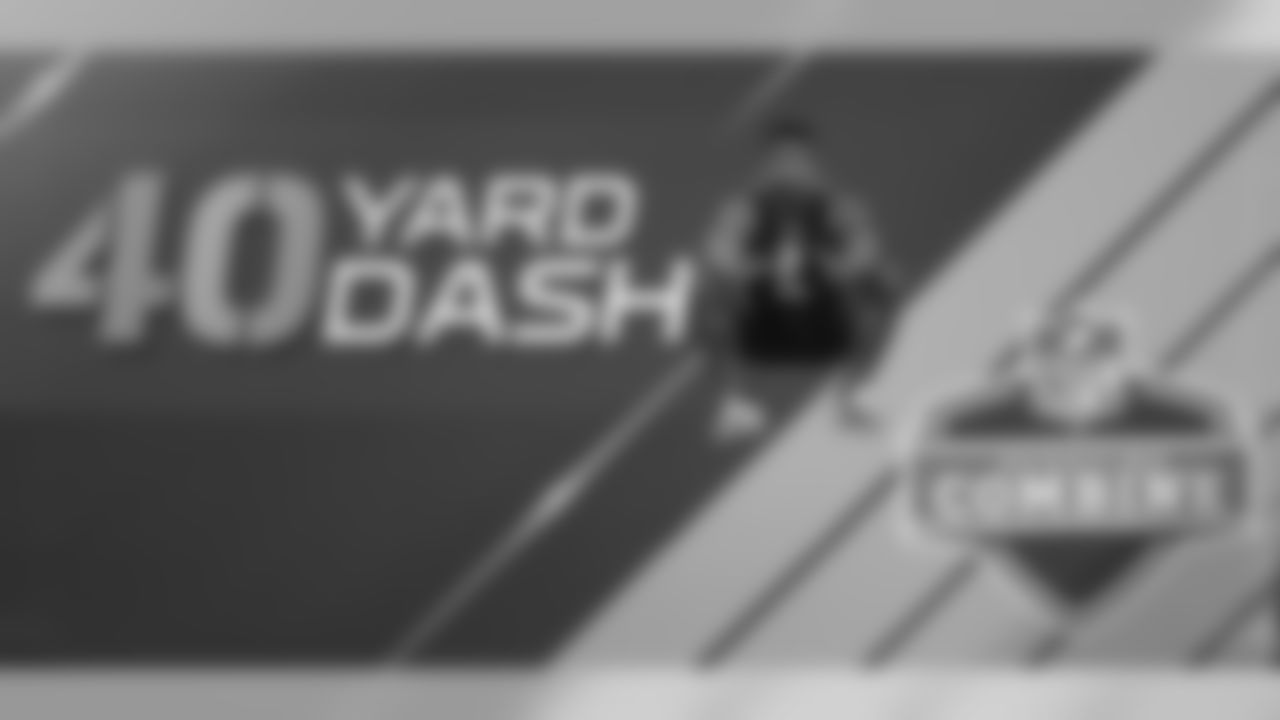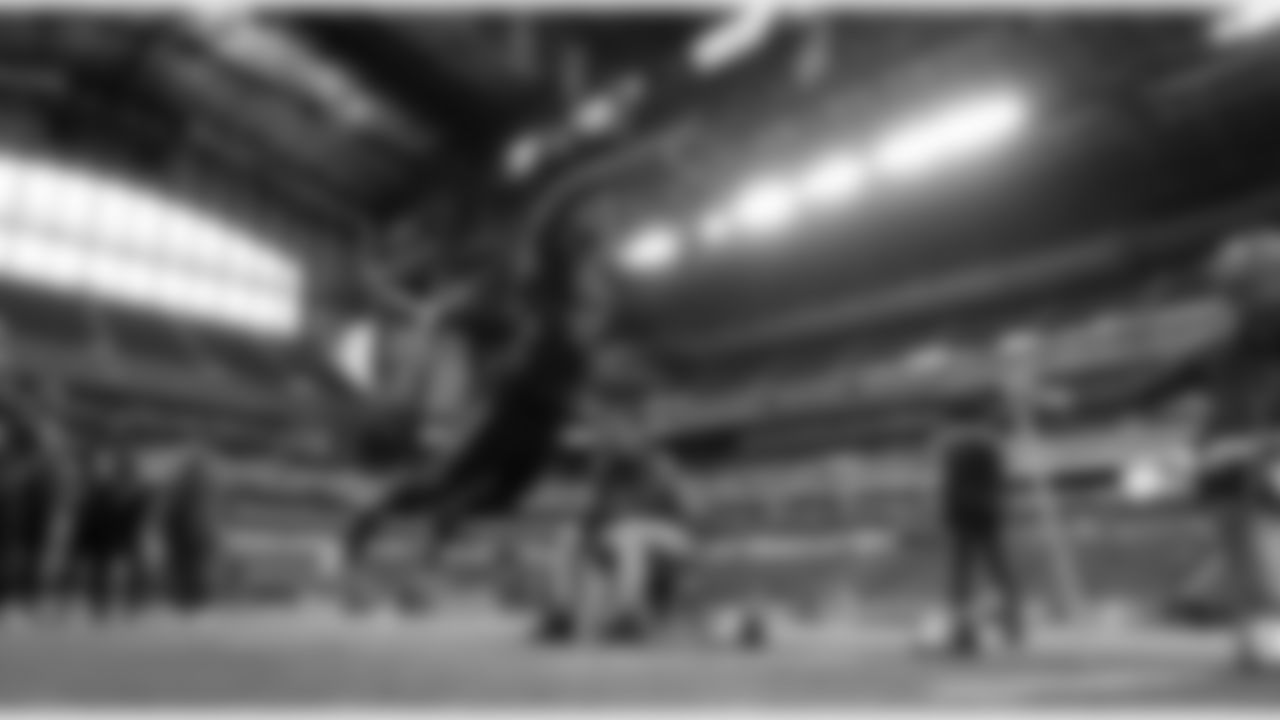Giants writers debate the top takeaways from the 2017 NFL Combine:
The 2017 NFL Scouting Combine is in the books. For the last week, the league personnel people gathered in Indianapolis to evaluate the top prospects coming out of college in advance of the draft, which begins April 27.
|
|||||||||||||||||||
In this week's "Cover 3" on Giants.com, we asked our staffers for a takeaway from the annual combine. Here is what they had to say:
NO TWO SCOUTS ARE ALIKE
By John Schmeelk
My takeaway from the combine might seem obvious, but it underlines the inexact science that is talent evaluation. A group of people trained as professional evaluators looking at the same players doing the same exact things can come away with completely different opinions about those players. Where one scout might see a flaw easily overcome with their other skills, another might think that deficiency is a death knell for the player's NFL career. The same person one scout might think is a first-round pick, another might think they are only third-round worthy.
Most of those opinions are formed before the players take one step onto the field at Lucas Oil Stadium. The times and performances recorded at the combine only serve to confirm what evaluators have already seen on tape. If a player does significantly better or worse than expected, game film will be revisited, but it won't be until then that a player's evaluation is significantly altered.
There are certain thresholds that evaluators want players to meet at the combine when it comes to measurables and performance, but there have been enough outliers over the years so that there is no absolute litmus test for any player at any position. There are no absolutes. How important each drill is for each player depending on the position is also something on which scouts disagree. One evaluator might put a lot of weight on the 40-yard dash, but another might think the short or long shuttle is a better gauge of future performance. Even required measurables to be effective at a position vary from team to team.
It is an overstatement to call putting a draft board together a crapshoot, given all the work put in by very talented and experienced professionals, but it certainly is not a science. Perhaps educated guesswork? There are consensus Top 10 players every season that turn out to be busts. A lot of time, there is just no way to know. So many things can get in the way of these players becoming stars, whether injury, off the field issues, or something else. Most are impossible to predict. The combine simply gives evaluators one more chance to check their work. Right or wrong, there is no limit to the differing opinions that will emerge after Indianapolis.
View the best images of the 2017 NFL Scouting Combine in Indianapolis








































DON'T KNOCK THE TWEENERS
By Dan Salomone
The dreaded "tweener" label might not be so dreaded anymore. The conventional thinking has been that if you played two positions, you didn't have one – kind of like the adage about quarterbacks. But the league is evolving. It's all about situations. "It's a matchup game, and Bill Belichick is the best that ever did it," NFL Network draft analyst Mike Mayock said this week at the combine. "And I think other teams are trying to figure out what he does and why he does it."
Just look at some of the top prospects: Jabrill Peppers, Solomon Thomas, Christian McCaffrey, Curtis Samuel, Charles Harris and T.J. Watt. There are a lot of tweeners out there this year.
"I don't take that as a bad thing," Stanford's Thomas said. "I take it as any team can draft me. I'm not labeled to a 4-3 [defensive end]; I'm not labeled to a 3-4 team. I can play any system, and I can play any position on the D-line."
For another example, look at Peppers, who worked out with both safeties and linebackers in Indianapolis. On first down, he's in one place. On third-and-long, he's in another. He can play the middle of the field as well as cover a running back like McCaffrey, another matchup player.
"So it's a matchup league," Mayock said, "and people are starting to figure that out."
LOTS OF DEPTH FOR KEY POSITIONS
By Lance Medow
While the drills are fun to watch on television, the true substance of the combine comes from parts of the event that occur behind closed doors: the interviews with teams and medical evaluations. The true impact of those facets won't be known until draft day, but, with all that being said, based on the results from the drills, my biggest takeway from the combine is the depth of this year's draft class at specific positions. Defensive line and tight end top the list. Texas A&M defensive end Myles Garrett may have solidified his hold on the top overall pick with a very impressive showing at the combine. While he's clearly a freak athlete, there are a number of other playmakers at that position, including Alabama's Jonathan Allen, Takkarist McKinley of UCLA, Temple's Haason Reddick and Stanford's Solomon Thomas, just to name a few who stood out because of their speed.
If you need a defensive lineman, you may be able to wait until the later rounds. Same can be said for tight end. Alabama's O.J. Howard and David Njoku of Miami (FL) didn't disappoint at the combine, and while the majority of the hype surrounds those two, there are plenty more to keep close tabs on, including Ole Miss' Evan Engram, who posted the fastest 40-yard dash time at his position. Iowa's George Kittle and Bucky Hodges of Virginia Tech also had impressive 40 times. The combine sets the tone for the start of free agency, and with numerous prospects at both tight end and on the defensive line, perhaps that changes teams' thinking with how and where they spend their money beginning March 9. If teams have faith they can get playmakers in the mid to late rounds at those positions, they may not aggressively pursue free agents in those spots. That's something to monitor once the market opens.
















